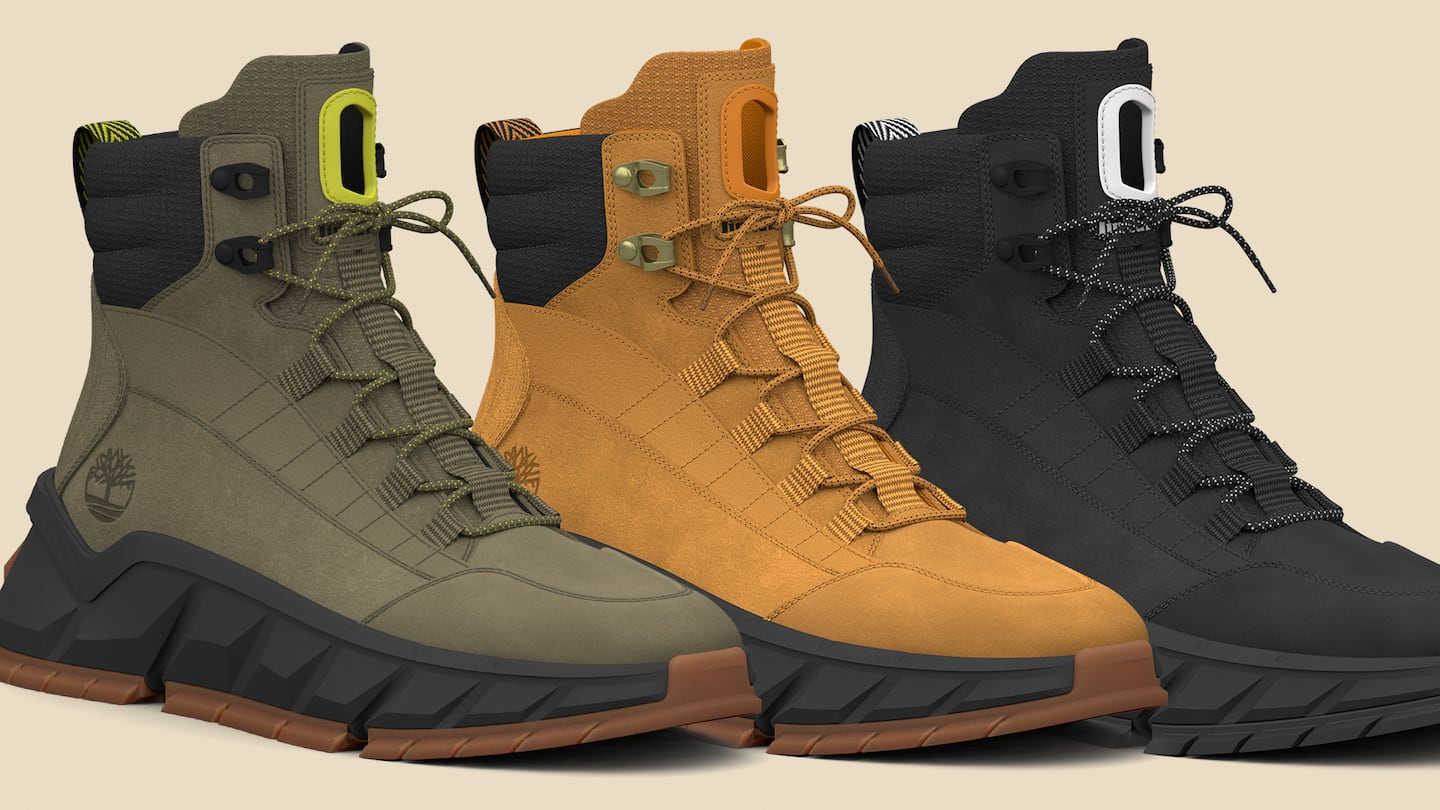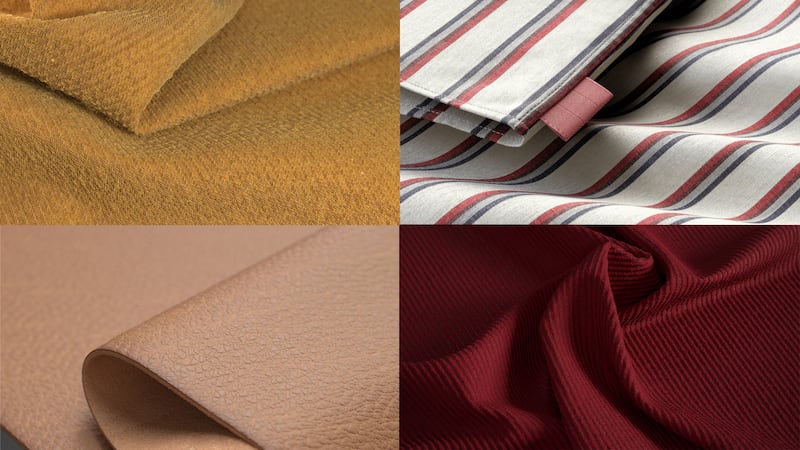
The Business of Fashion
Agenda-setting intelligence, analysis and advice for the global fashion community.

Agenda-setting intelligence, analysis and advice for the global fashion community.

In 2019, Timberland’s design team got a last-minute brief for a new footwear style to be developed as quickly as possible. Normally, however, creating a new product is slow: it can take months to make and revise physical samples, each of which must be shipped back and forth between factories in Asia and the company’s US offices.
Instead, Timberland bypassed that process and did everything in 3D. The virtual samples of the new Madbury sneaker boot were what the sales team used to determine Timberland’s own buy-in and even sell the shoe to retailers.
“We didn’t have time to actually make samples,” said Chris McGrath, Timberland’s vice president of global footwear and design development. “We went straight into 3D, which meant that we designed it in 3D from a sketch, and then we went into selling that 3D item.”
The virtual samples allowed Timberland to respond in a fraction of the time it would typically have taken. It was also that year the company formalised 3D as part of its design process, committing to creating the infrastructure and devoting resources to integrating it. It now has a team of eight dedicated to 3D.
ADVERTISEMENT
3D design and virtual sampling have been steadily catching hold in fashion after a long period of companies talking about the technology but few fully adopting it. More brands are now embracing it or expanding its use to speed up their processes, cut costs and burnish their sustainability credentials.
Other VF Corp brands besides Timberland such as Vans and Dickies are increasingly using digital prototypes. Macy’s produced 61 percent of its samples virtually in its 2022 development season, up from just 5 percent in 2019. Hugo Boss expects to create 90 percent of samples digitally by the end of next year, the company told BoF. And during its investor day last year, Adidas said more than €5 billion (around $6 billion at the time) of its sales came from products created with 3D design, a figure it planned to continue scaling.
These digital prototypes don’t replace physical ones entirely — designers do still generally need to handle some tangible representation of an item before sending it into production. The technology has made more inroads in categories like footwear than in luxury fashion, where brands want to see how a gown will drape and move on a real person before putting it into production.
There are other challenges, like training or hiring staff. Maybe the biggest, in McGrath’s view, is the cultural change necessary to integrate it into the way a company operates. But indications are that virtual sampling will only become more common across the board. Brands are even beginning to explore designing in virtual reality.
“There is, in a more macro view, an acceleration of the digital transformation in the fashion industry for the last, I would say, two years” said Pierre Maheut, director of strategic initiatives and partnerships at Adobe Substance 3D, a suite of tools that integrates with various 3D software and is used by brands including Hugo Boss, Louis Vuitton and Salomon.
Companies that have adopted 3D design say it allows designers to work faster and be more creative, since they’re able to produce and edit more samples more quickly.
It also has sustainability advantages. While companies can recycle some of their physical samples, they still create waste. It can reduce travel too — and the associated carbon emissions — both for physical samples that would normally be shipped back and forth and for teams of people.
McGrath said he would historically go on four or five development trips to Asia each year. He’s only gone once since the pandemic. Part of that was due to Covid, but now Timberland’s designers can send the brand’s factory partners 3D data, look at it on-screen together and make decisions in real-time.
ADVERTISEMENT
That ability to have different teams collaborate virtually is also a reason Nike turned to 3D to design the Air Max Scorpion during the pandemic.
Timberland can’t replace physical samples entirely with virtual ones because it still needs to understand how a product will perform on foot. But McGrath said they’ve been able to cut rounds of physical sampling along the entire development process in half, saving time at each step.
3D imaging was the most widely adopted new technology among 75 luxury companies surveyed by Bain and Comité Colbert, a federation of French luxury houses. While that includes creating assets for 3D visualisations online, the most popular use case was virtual sampling, according to Mathilde Haemmerlé, an expert in Bain’s retail and luxury practice.
Not all in the industry are embracing it at the same pace, however. Haemmerlé said around 50 percent of hard-luxury brands and 65 percent of beauty brands in their survey used 3D for virtual sampling, but only about 20 percent of fashion and accessories brands did.
That’s largely due to the benefits and drawbacks 3D prototypes offer each category. In high jewellery, for example, creating physical samples can be complex and costly. Beauty brands tend to use it to design packaging, like lipstick tubes, while fragrance companies use it for bottles.
For ready-to-wear, on the other hand, “it’s less ready from a technology perspective,” Haemmerlé said, because it’s still hard for designers to envision how materials will move on a real body.
That’s not to say the technology can’t produce faithful depictions of fabric down to the weave pattern. Adobe’s 3D fabrics can be difficult to distinguish from photographs. Hugo Boss said it’s using the technology for products like jersey items, shirts, knitwear, bodywear and hosiery, and it can be especially useful for creating new versions of staple styles released year after year.

“When you do a new season for some of the very famous brands of footwear, for instance, usually the 3D model does not change,” Adobe’s Maheut said. At Louis Vuitton, he noted, “one of the main challenges is to revisit iconic designs through colour, material and finish.”
ADVERTISEMENT
It’s helpful to footwear brands like Timberland for another reason, too. Making elements like a shoe’s outsole, midsole and insoles requires steel molds that are cut to order, known as toolings. 3D modeling eliminates the need to produce new toolings each time the company wants to see a design with the sole tweaked slightly.
Given that Timberland has anywhere from six to 12 new toolings in a season, the savings in time and expenses are significant. It helps explain why footwear brands including Nike, Adidas, Salomon and Hoka are also turning to virtual sampling.
Incorporating 3D into the design process takes more than just downloading software. You need people equipped to use it, which means training or hiring staff. Fashion schools have been slow adding 3D to their curriculums, and while that’s now changing, it means the skillset can be in short supply among designers.
On the other hand, McGrath said hiring for 3D roles can attract talent that otherwise might not have considered a job at Timberland. It’s required some adjustments for current employees too.
“There were still people who wanted to pick up a sample as early as possible to make a decision, and we just had to take them through an education program,” he said.
Timberland had to onboard some of its factory partners as well so they could receive and make use of the 3D data. Early on, it was only able to use 3D as an internal tool, which limited its usefulness.
Timberland has now been working on incorporating 3D end-to-end for three years, which McGrath pointed out sounds long but actually isn’t for setting up infrastructure and a full team. They’ve now started to test out designing in virtual reality as well, which provides an even better sense of a product’s dimensions. Nike has similarly started using virtual reality to design.
Companies are already using 3D assets instead of product photos at times in their marketing and on their e-commerce sites. Next brands could use 3D images created for use behind the scenes and adapt them for virtual environments or use in virtual try-on. Timberland and Hugo Boss are already working on it.
Students are training in 3D design and data analytics as the fashion industry undergoes a digital transformation and readies itself for an increasingly virtual future.
The German sneaker giant is investing for a new era of tech-enabled retail in a bid to close the gap with Nike.
Their mix of technical expertise and digital artistry has put 3D creators, game designers and NFT experts in high demand among fashion brands as they venture further into virtual territories.

Marc Bain is Technology Correspondent at The Business of Fashion. He is based in New York and drives BoF’s coverage of technology and innovation, from start-ups to Big Tech.
The nature of livestream transactions makes it hard to identify and weed out counterfeits and fakes despite growth of new technologies aimed at detecting infringement.
The extraordinary expectations placed on the technology have set it up for the inevitable comedown. But that’s when the real work of seeing whether it can be truly transformative begins.
Successful social media acquisitions require keeping both talent and technology in place. Neither is likely to happen in a deal for the Chinese app, writes Dave Lee.
TikTok’s first time sponsoring the glitzy event comes just as the US effectively deemed the company a national security threat under its current ownership, raising complications for Condé Nast and the gala’s other organisers.